
The exchange of tourists between Iran and its neighbors is expected to increase in the months to come, Iran’s deputy tourism minister Ali-Asghar Shalbafian has announced. The official made the remarks during a meeting with Hamad Obaidalla the Chief Commercial Officer of Fly Dubai Airlines on Monday. Increasing tourist exchanges with neighboring countries is on the agenda for Iran following the expansion of the flight network between Iran and the United Arab Emirates, he said. To achieve this goal, the private and public sectors will consolidate their capacities, the official added. For his part, Obaidalla said that currently, Fly Dubai Airlines operates 30 flights a week to Iran, and this capacity will grow to nearly 50 flights in the future. By relying on this capability, tourists can be directed to Iranian tourist destinations effectively, he added. Communication between the private sector of the two countries plays a crucial role in achieving executive strategies, he noted. Back in September, Cultural Heritage, Tourism, and Handicrafts Minister Ezzatollah Zarghami announced the issuance of tourist visas and the flow of foreign tourists to Iran would resume as per President Ebrahim Raisi’s order following 19 months of suspension. Currently, tourist visas are once again being issued to cultivate good grounds of hope for travel insiders. However, months of steep recession have taken its toll. Many travel insiders, hoteliers, and tour operators have faced big dilemmas such as bankruptcy, unemployment, debts, and the prospects of not being competitive on the international level. Only months into the outbreak, Zarghami’s predecessor, Ali-Asghar Mounesan, lamented that the number of foreign travelers to Iran was drastically plunged due to the pandemic. “Tourism of the country was growing before the corona [outbreak], its revenues reached $11.7 billion in 2019, which accounted for 2.8% of GDP, nearing the average share of tourism in the world GDP, which was 3.2 percent,” Mounesan said. He added 8.7 million foreign nationals visited Iran during the [Iranian] year (1398), adding that Iran was ranked as the second fastest-growing country in tourism based on data compiled by the World Tourism Organization. The average of international travels to and from Iran fell by 80 percent during the past Iranian calendar year 1399 (ended on March 20, 2021) from a year earlier caused by various coronavirus restrictions. Optimistic forecasts, expect the country would achieve a tourism boom after coronavirus is contained, believing its impact would be temporary and short-lived for a country that ranked the third fastest-growing tourism destination in 2019. UNWTO’s Panel of Experts foresees a rebound in international tourism in the current year, mostly in the third quarter. However, some experts suggest the rebound could occur only in 2022. The Islamic Republic expects to reap a bonanza from its numerous tourist spots such as bazaars, museums, mosques, bridges, bathhouses, madrasas, mausoleums, churches, towers, and mansions, of which 26 are inscribed on the UNESCO World Heritage list. Under the 2025 Tourism Vision Plan, Iran aims to increase the number of tourist arrivals from 4.8 million in 2014 to 20 million in 2025.
Create: Dec 20, 2021 Edit: Dec 22, 2021 Regional News
Updating the list of countries that are highly affected by the COVID-19 disease, the German authorities have announced that Iran and four other countries will be removed from the high-risk list on Sunday, December 12. The new update of lists has been published by the Robert Koch Institute (RKI), which is Germany’s responsible body for disease prevention and control. According to the announcement, Iran, Armenia, Mongolia, the Philippines, and Romania who have been fully vaccinated or recovered from the COVID-19 will no longer be part of the high-risk list, according to Schengen Visa. Moreover, travelers from the cited countries will also be released from the quarantine requirement. On the other hand, strict entry rules will continue to apply to unvaccinated and unrecovered travelers who reach Germany from one of the countries that are to be removed from the high-risk list. They can enter Germany only for absolutely essential purposes provided that they follow entry rules, such as testing and quarantine requirements, the report said. Furthermore, In regards to Germany’s high-risk list, no new countries have been added to it. Still, the list currently includes Switzerland, Poland, Liechtenstein, and several other EU/Schengen Area countries such as Croatia, Belgium, Greece, Latvia, Lithuania, Austria, Slovakia, Slovenia, Czechia, and Hungary. All travelers from a high-risk area need to fill in a digital entry form. Moreover, those who haven’t been vaccinated or recovered from the virus must stay self-isolated for ten days upon their arrival in Germany. “Travelers who have previously stayed in a high-risk area must have a test, vaccination, or recovery certificate with them and, if a carrier is used, present the proof for the transport,” the authorities explained. Similar to the high-risk list, Germany’s virus variant areas list has also remained unchanged. Currently, the virus variant list includes Botswana, Eswatini, Lesotho Malawi, Mozambique, Namibia, Zimbabwe, and South Africa. Beforehand, the German leaders agreed to impose stricter restrictions to prevent the further spread of the COVID-19 and its new variant.
Create: Dec 12, 2021 Edit: Dec 12, 2021 International News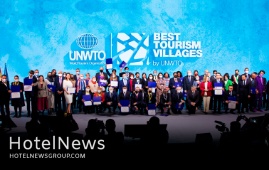
The best examples of villages embracing tourism to provide opportunity and drive sustainable development have been celebrated at the World Tourism Organization (UNWTO) General Assembly in Madrid. The Best Tourism Villages by UNWTO initiative was launched to advance the role of tourism in safeguarding rural villages, along with their landscapes, natural and cultural diversity, and their local values and activities, including local gastronomy. A total of 44 villages from 32 countries across the five world regions were granted the recognition in 2021. All of them stand out for their natural and cultural resources as well as for their innovative and transformative actions and commitment to the development of tourism in line with the Sustainable Development Goals (SDGs). The villages were evaluated by an independent Advisory Board based on a set of criteria covering nine areas: - Cultural and Natural Resources - Promotion and Conservation of Cultural Resources - Economic Sustainability - Social Sustainability - Environmental Sustainability - Tourism Potential and Development and Value Chain Integration - Governance and Prioritization of Tourism - Infrastructure and Connectivity - Health, Safety and Security All of the 44 chosen villages scored a total of 80 or more points or more out of a possible 100. Tourism as a driver of rural development and inclusion “Tourism can be a driver of social cohesion and inclusion by promoting a fairer distribution of benefits throughout the territory and empowering local communities,” says UNWTO Secretary-General Zurab Pololikashvili. “This initiative recognizes those villages committed to making tourism a strong driver of their development and wellbeing”. The Best Tourism Villages by UNWTO initiative includes three pillars: The ‘Best Tourism Villages by UNWTO’: Recognizes villages which are an outstanding example of a rural tourism destination with recognized cultural and natural assets, that preserve and promote rural and community-based values, products and lifestyle and have a clear commitment to innovation and sustainability in all its aspects – economic, social and environmental. The ‘Best Tourism Villages by UNWTO’ Upgrade Programme: The Upgrade programme will benefit a number of villages that do not fully meet the criteria to receive the recognition. These villages will receive support from UNWTO and its Partners in improving elements of the areas identified as gaps in the evaluation process. The ‘Best Tourism Villages by UNWTO’ Network: The Network will provide a space for exchanging experiences and good practices, learnings, and opportunities. It will include representatives of the villages recognized as the ‘Best Tourism Village by UNWTO’ , the villages participating in the Upgrade Programme, as well as experts, public and private sector partners engaged in the promotion of tourism for rural development. A total 174 villages were proposed by 75 UNWTO Member States (each Member State could present a maximum of three villages) for the 2021 pilot initiative. Among which 44 were recognized as Best Tourism Villages by UNWTO. Another 20 villages will enter the Upgrade Programme of the Initiative. All 64 villages enter to make part of the UNWTO Best Tourism Villages Network. The next edition will open in February 2022. List of Best Tourism Villages by UNWTO 2021: Bekhovo, Russian Federation Bkassine, Lebanon Bojo, Philippineshe Caspalá, Argentina Castelo Rodrigo, Portugal Cuetzalan del Progreso, Mexico Cumeada, Portugal Gruyères, Switzerland Batu Puteh , Malaysia Kaunertal, Austria Le Morne, Mauritius Lekunberri, Spain Maní, Mexico Misfat Al Abriyeen, Oman Miyama, Japan Mokra Gora, Serbia Morella, Spain Mustafapaşa, Turkey Nglanggeran, Indonesia Niseko, Japan Nkotsi Village, Rwanda Old Grand Port, Mauritius Olergesailie, Kenya Ollantaytambo, Peru Pano Lefkara, Cyprus Pica, Chile Pochampally, India Puerto Williams, Chile Radovljica, Slovenia Rijal Alma'a, Kingdom of Saudi Arabia Testo Alto, Brazil Saas Fee, Switzerland San Cosme y Damián, Paraguay San Ginesio, Italy Sidi Kaouki, Morocco Solčava, Slovenia Soufli, Greece Taraklı, Turkey The Purple Island, Republic of Korea Ungok Village, Republic of Korea Valposchiavo, Switzerland Wonchi, Ethiopia Xidi, China Yucun, China Additionally, UNWTO will work with the following villages participating in the Upgrade Programme: Ordino, Andorra Khinalig, Azerbaijan Koprivshtitsa, Bulgaria Kaštelir Labinci, Croatia Agros, Cyprus Fuwah, Egypt Western Samos, Greece Hollókő, Hungary Biei, Japan Capulálpam de Méndez, Mexico Godinje, Montenegro Gornja Lastva, Montenegro Oukaimeden, Morocco Barangay Tenani, Philippines Gasura, Rwanda Gostilje, Serbia Gorenja Vas, Slovenia Cantavieja, Spain Bo Suak, Thailand Ruboni, Uganda
Create: Dec 5, 2021 Edit: Dec 5, 2021 International News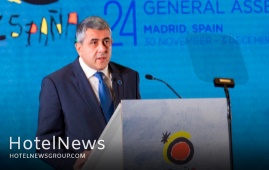
The Member States of the World Tourism Organization (UNWTO) have strongly aligned themselves behind its leadership and vision for the sector. Coming together for the 24th General Assembly in Madrid, Spain, Members from every global region approved the Organization’s Programme of Work and endorsed key initiatives designed to build a more a resilient, inclusive and sustainable tourism. The General Assembly has brought together more than 1,000 delegates from 135 countries, including 84 Ministers of Tourism as well as business leaders, destinations and representatives of key international organizations. Opening the General Assembly, UNWTO Secretary-General Zurab Pololikashvili cited the spirit of solidarity and determination that has defined tourism’s response to an unprecedented crisis. In presenting his Report to Members, he made clear how a focus on collaboration and harmonization of protocols, political advocacy and securing financial support for tourism, have help the sector mitigate the impacts of the pandemic and laid the foundations for tourism’s restart in many parts of the country. UN and International Community Backing Mr Pololikashvili said: “In every global region, the pandemic has made clear the importance of our sector – for economic growth, for jobs and trade, and for protecting natural and cultural heritage. We must make the most of this opportunity – to transform goodwill into concrete support.” Emphasizing the significance of the General Assembly, as well as UNWTO’s elevated stature within the global agenda, United Nations Secretary-General Antonio Guterres welcomed delegates and called for them to work together for a “green, inclusive, sustainable” future. Mr Guterres added: “I commend UNWTO and Secretary-General Pololikashvili and hope the decisions taken at the General Assembly will help restore trust in travel and get the world moving safely do developing economies can reap the benefits of sustainable tourism.” The United Nations Secretary-Generals words of support were echoed by the Director-General of the World Health Organization (WHO) Dr Tedros Adhanom Ghebreyesus, by Rebeca Greenspan, Secretary-General, United Nations Conference on Trade and Development (UNCTAD), by Juan Carlos Salazar Gómez, Secretary-General of the International Civil Aviation Organization, and by Vice-President of the European Commission Margaritis Schinas. Alongside receiving an updated on UNWTO’s activities since the last General Assembly two years ago, Members also benefited from a comprehensive overview of the latest tourism trends, as indicated by UNWTO’s latest data, as well as an updated overview of restrictions on travel worldwide. From the floor of the Assembly, Members from different global regions expressed their solidarity with countries impacted by the continued imposition of travel restrictions. Also in Madrid, Member States voted in person to approve the UNWTO Executive Council’s nomination of Mr Pololikashvili to serve as Secretary-General for a second term. On the back of the strongly favorable vote, Mr Pololikashvili will lead UNWTO from 2022 to 2025. UNWTO Again Welcomes Royal Approval On the eve of the General Assembly, His Majesty King Felipe VI of Spain praised UNWTO’s “outstanding work” leading global tourism, most notably over the past 18 months during the worst crisis in the sector’s history. At a special Royal Gala Dinner, His Majesty also emphasized the importance of tourism for economies and societies, both in Spain and globally, making the sector’s recovery essential for many millions of people.
Create: Dec 2, 2021 Edit: Dec 2, 2021 International News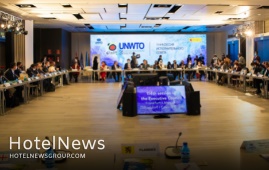
Tourism leaders from every global region have arrived in Madrid for the 24th Session of the UNWTO General Assembly. Ministers of Tourism will be joined by representatives of international organizations and from across the private sector for the first truly global tourism meeting to be held since the start of the pandemic, with innovation, education and investments high on the agenda. In all, more than 1,000 participants, representing 135 countries and including 84 Ministers and Vice-Ministers of Tourism will attend the most important meeting of the United Nations specialized agency for tourism. UNWTO Secretary-General Zurab Pololikashvili said: “Guided by UNWTO, global tourism is facing up to the challenges of today while looking to the opportunities of tomorrow. The UNWTO General Assembly shows the sector’s determination to restart, lead recovery and be a central pillar of sustainable development and climate action.” Towards an International Code for the Protection of Tourists UNWTO opened the General Assembly with an Induction Session for the International Code for the Protection of Tourists. Launched in response to the drop in consumer confidence caused by the pandemic, the landmark legal code will provide minimum standards and consumer rights for tourists in emergency situations. It was developed in collaboration with 98 Member States and Associate Members as well as 5 non-member States international organizations and leading private sector stakeholders. Once adopted by the UNWTO General Assembly, the Code will be presented to the United Nations General Assembly in 2022 with the aim of making it a Resolution. Affiliate Members Meet to Reform and Restart Held within the framework of the General Assembly, UNWTO’s Affiliate Members met today for their 43rd annual Plenary Session. Made up of businesses and destinations, as well as representatives from civil society and academic, UNWTO counts on more than 500 Affiliates to transform tourism policy into action. In Madrid, participants were given an overview of UNWTO’s crisis response, with the Destination Tracker developed by in partnership with the International Air Transport Association (IATA) presented as an example of effective public-private partnerships. At the same time, delegates approved the proposed Reform of the Legal Framework for UNWTO Affiliate Membership, paving the way for more effective collaboration Executive Council Endorses Key Initiatives Ahead of the official opening of the General Assembly, UNWTO convened its Executive Council for a 114th session. The Council, which serves as the governing board of UNWTO, met to hear Secretary-General Pololikashvili present his report on the work done since the 113th session, also held in Madrid at the start of the year. The Members of the Executive Council agreed to the iimplementation of the General Programme of Work for 2020-2021 and for 2022-2023. Members also endorsed several key UNWTO initiatives, notably the UNWTO Recommendations on Tourism for Rural Development, the Best Tourism Villages project and the Global Tourism Plastics Initiative. Also meeting in Madrid, the UNWTO Committees on Tourism and Sustainability, on Tourism and Competitiveness and on Tourism Online Education, brought together experts to explore ways to advance the Organization’s Programme of work around key priority areas.
Create: Dec 1, 2021 Edit: Dec 1, 2021 International News
A host of international travel experts have discussed ways to expand sports tourism as one of the emerging propellers of the COVID-battered industry. Celebrated experts and academics in sports tourism debated on current and future trends in the sector and underlined the key role of sport for the development of more sustainable and inclusive tourism during the two-day World Sports Tourism Congress, which came to an end on November 26 November in Spain. At the opening ceremony, UNWTO Secretary-General Zurab Pololikashvili declared that the holding of this Congress, with strong in-person participation, is a clear message that the tourism sector is ready to welcome tourists again, and the recovery of sports tourism plays an important role, the UN body reported. Pololikashvili added: "An encouraging example is the gradual return of major sporting events, which is a major driver of the restart of tourism." Sport events of various kinds and sizes attract tourists as participants or spectators and destinations try to add local flavors to them to distinguish themselves and provide authentic local experiences. Mega sports events such as the Olympics and World Cups can be a catalyst for tourism development if successfully leveraged in terms of destination branding, infrastructure development, and other economic and social benefits. In addition, sports tourism may provide plenty of opportunities for neighboring countries of a certain state which is set to host a mega-sport event. For example, the Iranian island of Kish in the Persian Gulf has announced its readiness to host Qatar World Cup spectators. According to Iran’s deputy tourism minister Ali-Asghar Shalbafian, Iran should benefit from the 2022 World Cup as a considerable opportunity to promote its distinctive travel attractions. “With the World Cup being held in a neighboring country, Iran can benefit from this important event, which if carefully planned, can bring significant wins for various sectors, especially the tourism industry in the country,” he noted. Local officials say, the proximity of Kish to Qatar, and the lower cost of staying on this island make it possible for spectators and teams to stay here during the World Cup, which will be held from November 21 to December 18, 2022. As mentioned by the UNWTO, sports tourism is one of the fastest-growing sectors in tourism. More and more tourists are interested in sports activities during their trips whether sports are the main objective of travel or not.
Create: Nov 30, 2021 Edit: Nov 30, 2021 Regional News
United Nations World Tourism Organization (UNWTO) and the Council of Europe will work together to develop the opportunities tourism offers to local communities and to enhance the tourist experience along the European region’s Cultural Routes. The joint actions will be aimed at recognizing the added value that cultural routes offer for sustainable tourism development, cultural heritage safeguarding and intercultural dialogue. The collaboration will also further highlight the routes’ potential for advancing social, economic and cultural development, benefitting both Europe and its partner countries by strengthening cultural and historical ties. International Year of Creative Economy 2021 The two organizations will be collaborating first in the sphere of creative tourism, to showcase good practices in line with the International Year of Creative Economy 2021, and further promote destinations encompassed by the Enlarged Partial Agreement on Cultural Routes (EPA) of the Council of Europe. UNWTO Secretary-General Zurab Pololikashvili said: “All along the Cultural Routes, tourism has the power to support jobs and create other development opportunities for communities. It is also a chance to protect and promote cultural heritage and to celebrate creativity.” Council of Europe Secretary General Marija Pejčinović Burić adds: “The Cultural Routes programme plays an important role in the promotion of Europe’s rich cultural heritage, in addition to being an effective tool for fostering intercultural dialogue and transnational co-operation. We are delighted that the UN’s World Tourism Organisation will contribute its expertise to the Cultural Routes programme on the basis of this Memorandum of Understanding.” Enhancing accessibility The partnership will also see UNWTO and the Council of Europe harness their individual expertise and technical capabilities to further develop Cultural Routes, through research, training and policymaking. Special attention will be paid to the mapping of Cultural Routes and to promoting greater accessibility for persons with disabilities and specific access requirements.
Create: Nov 26, 2021 Edit: Nov 26, 2021 International News
UNWTO and Instagram have joined forces to produce a ‘Tourism Recovery Playbook ’, and so help destinations and business harness the power of digital and visual storytelling to reach new audiences and return to growth. This first ever partnership with Instagram forms part of UNWTO’s wider shift towards harnessing the power of digital innovation to drive the restart of tourism, especially local and sustainable tourism. It also represents Instagram’s recognition of tourism as a leading provider of livelihoods and global opportunity, welcoming UNWTO as partners in a first structured effort to use the platform as a tool to help kickstart the sector’s recovery. The partnership was announced against the backdrop of World Travel Market in London, the leading tourism trade fair where UNWTO brings together political and business leaders, and after of UNWTO amplifying tourism’s unified response to the climate emergency at the UN Climate Change Conference COP26 in Glasgow. Expert insights into storytelling for tourism UNWTO’s partnership with Instagram will show that safe, responsible travel is possible, and to illustrate how just one tourist can make a big difference The Recovery Playbook provides insights into making the most of the platform, from producing Reels to showcase destinations to using Guides and other tools to illustrate how the sector is ready to welcome tourists back safely and responsibly. It also explores the best ways to encourage renewed local travel, while raising environmental awareness. Alongside best practice and tips on effective tourism storytelling, the publication also features case studies of small businesses and destinations have successfully used Instagram to connect with key audiences during the pandemic. In his foreword to the Tourism Recovery Playbook, UNWTO Secretary-General Zurab Pololikashvili says: “As parts of the world begin cautiously opening up again, now is the time to be creative in showing why tourism matters – for individuals, for our communities and for our planet. UNWTO’s partnership with Instagram will show that safe, responsible travel is possible, and to illustrate how just one tourist can make a big difference.” “We know countless small businesses and destinations are ready to welcome the world back to their doorsteps,” said Asya Kislyuk, Policy Programs Manager at Instagram. “Instagram is proud to provide a playbook for people to help make it happen when the time is right – safely and sustainably.” Advancing UNWTO’s digital shift This first collaboration with Instagram builds on UNWTO’s ongoing turn towards greater use of digital tools and visual storytelling to make clear the relevance and importance of tourism to economies, societies, and planet. The Organization has accelerated this shift in its efforts to scale up Member support and enable them to better seize the advantages of digital communications platforms.
Create: Nov 23, 2021 Edit: Nov 23, 2021 International News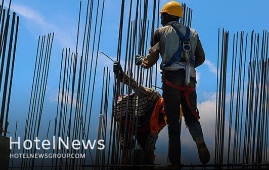
Private investors are now constructing a 5-star hotel, which according to local officials would be the “biggest” of its kind in the northwestern Ardabil province. “Construction operation of what would be the biggest five-star hotel in Ardabil province is ongoing in [the touristic region of] Aznav in Khalkhal county,” Khalkhal’s governor said on Tuesday. The seven-story hotel would have 350 beds in an area of 11,000 square meters, Masud Yeganeh said, CHTN reported. Back in January, the provincial tourism chief, Nader Fallahi, announced that more than 150 tourism-related projects are underway across the mountainous province. “The mentioned projects will prepare the province’s tourism sector for the post-coronavirus era when the number of tourists and travelers is expected to rise magnificently,” the official said. Sprawling on a high, windswept plateau, Ardabilis well-known for having lush natural beauties, hospitable people, and its silk and carpet trade tradition. It is also home to the UNESCO-registered Sheikh Safi al-Din Khanegah and Shrine Ensemble. The province is very cold in winter and mild in summer, attracting thousands every year. The capital city of Ardabilis usually recorded as one of the coldest cities in the country in winter.
Create: Nov 20, 2021 Edit: Nov 20, 2021 Regional News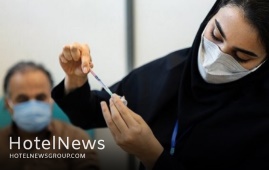
Iran must rebuild trust with the global tourism market, the Head of the Iranian Tour Operators said on Sunday. The level of Iran’s health security and vaccination against coronavirus should be advertised internationally to gain further trust from the global tourism market, Ebrahim Pourfaraj said. The health and safety level in Iran is a concern for foreign tourists, he noted, ISNA reported. It is the responsibility of the Ministry of Foreign Affairs, embassies, economic and cultural attaches, and ministries of health and tourism to inform the world about Iran’s [great achievements in] public vaccinations, the official added. During the pandemic, Iran has maintained contact with global tourism markets and companies that worked with the country in the past, especially since virtual communication and meetings have been held, he mentioned. “Following the resumption of the tourist visa, visitors from Russia and France have traveled to Iran and we are currently expecting a smaller number of tourists in Iran due to the current situation in the world,” he explained. There is, however, speculation that in the spring of 2022, the next high season of travel to Iran, the number of tourists and trips will increase, he added. In January, the official announced that international tourism flow to Iran will return to normal in 2022. Although there are requests for traveling to Iran in the current year (2021), most travel agencies and tour operators believe that the flow will go back to normal in the next year, he said. Beginning mass vaccination against the coronavirus will provide better and safe conditions for international travels in 2022, he added. Last November, the World Tourism Organization announced that international tourist arrivals to Iran plunged 72% during the first eight months of 2020 when compared to 2019, highlighting the severe impact of COVID-19 as the main factor. Some experts believe Iran is still somehow “unknown” for many potential travelers due to Western “media war”. The ancient land is potentially a booming destination for travelers seeking cultural attractions, breathtaking sceneries, and numerous UNESCO-registered sites. Under the 2025 Tourism Vision Plan, Iran aims to increase the number of tourist arrivals from 4.8 million in 2014 to 20 million in 2025.
Create: Nov 15, 2021 Edit: Nov 15, 2021 Regional News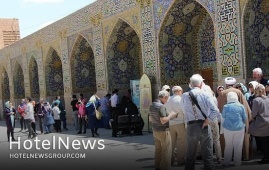
A number of Russian travel agents and tour operators have recently arrived in Iran for a week-long familiarization tour, Mehr reported on Friday. The group, which entered the Islamic Republic on Thursday through Imam Khomeini International Airport, was scheduled to travel earlier this year following the implementation of Iran-Russia visa waiver for group tours; however, because of coronavirus restrictions, they were forced to postpone the journey, the report added. Supported by Mahan Airlines, the group will tour the southern cities of Kerman, Mahan, Shiraz, and central city of Isfahan as well as the UNESCO-registered Lut Desert in the barren heartland of Iran. The tour will be held observing strict health protocols and social distancing rules. Earlier in June, the former Iranian tourism minister Ali-Asghar Mounesan finalized work on a bilateral visa-free agreement for tourist groups with Russia. In 2017, former Iranian President Hassan Rouhani and his Russian counterpart Vladimir Putin inked a visa-free agreement for tourist groups. A joint technical committee has been developing an action plan for the previously agreed visa-free travel arrangements since then, in order to put the agreement into effect. However, the outbreak of the coronavirus put a halt to the agreement. Based on the 2017 agreement tour groups of 5 to 50 people heading to [easternmost parts of] Russia from Iran or vice versa are granted a visa-free stay of up to 15 days. Back in May, Mostafa Sarvari, who presides over the tourism marketing and advertising office of the Iranian Tour Operators Association, announced many Russian tourists are eager to travel to Iran, recounting his Russian counterparts. “Many [potential] Russian travelers are motivated to visit novel and lesser-known destinations such as Iran that could be a safe and attractive destination,” he said. “According to Russian tourism experts, the feedback from Russian tourists who have traveled to Iran has been very positive, and its reflection, especially on social media, has caused a great deal of enthusiasm and interest.” According to Ebrahim Pourfaraj, who heads the Iranian Tour Operators Association, rounds of negotiations have been held between Iranian tour operators, travel marketers, and their Russian counterparts. “We’ve been commenced talks with some Russian travel agents to put Iranian destinations on their itineraries…. And the Iranian Tour Operators Association has also entered negotiations with Russian unions for outbound tours to attract more travelers from Russia. Pourfaraj says the majority of potential Russian travelers are unaware of the vast tourist attractions that exist in every corner of Iran. “The fact is that Iran’s political and economic relations with Russia are considered as good, but this has nothing to do with attracting tourists because it is directly connected with the Russian people. It is the Russian people who must choose Iran as their destination.” Maya Lomidze, executive director of the Association of Tour Operators of Russia, had told Sputnik that the visa agreement may significantly surge the tourist flows between the two countries, just like it happened when a similar deal was signed between Russia and China. The flow of Iranian tourists to Russia increased by 50-70 percent following the operation of direct flights that connect Iran to St. Petersburg, Moscow, and Sochi, she said. Iran is taking proactive measures in line with the long-term goal of 20 million tourists by 2025.
Create: Nov 9, 2021 Edit: Nov 9, 2021 Regional News
Home to one of the world’s oldest continuous major civilizations, with historical and urban settlements dating back to 7000 BC, Iran seeks to attract more foreign travelers, and in particular, vacationers from China. Iran’s deputy tourism minister on Wednesday stressed the need for all-inclusive fault detection, and identification of effective factors to expand tourism ties with China in a meeting with travel experts from the state-run institutes and the private sector. We should pay attention to the Chinese market in a more pragmatic approach,” Ali-Asghar Shalbafian said in the follow-up session held to formulate new strategies to expand tourism cooperation between the two ancient countries. So far, steps have been taken to examine the Chinese tourism market, but today the (essential) need is to implement executive measures based on [our] fault detection and macro planning,” the official noted. Insignificant numbers of Chinese restaurants, Chinese-language guides, or even inappropriate lodging facilities are deemed to be among the main reasons why Chinese arrivals in Iran fall short of expectations. Some experts believe that part of this failure comes from inside Iran because Chinese restaurants are scanty across the country while the cuisine is of high importance for the majority of the Chinese people. Moreover, Chinese travelers need fluent Chinese-language tour guides whose numbers are limited in the Islamic Republic. Last year, Tehran’s ex-ambassador to Beijing said Iran was seeking to become a tourist destination for millions of potential travelers from China as the two countries are working on a 25-year comprehensive cooperation plan that includes boosting relations in the field of tourism. Speaking in the TV program, Mehdi Safari reminded some 200 million Chinese tourists to visit different countries annually, adding “according to this agreement Iran will become one of the tourist destinations for Chinese travelers so that Iran can attract one to two million Chinese tourists to the country.” This will create a transformation in Iran’s tourism industry and will create jobs and a large market for the handicrafts industry of the country,” he expanded. In 2019, the Islamic Republic waived the visa requirement for Chinese nationals willing to visit the country. The decision was made to attract more foreign tourists to the country; however, it was a unilateral measure, because Iranian tourists visiting China still need visas. Under the 2025 Tourism Vision Plan, Iran is expecting to increase the number of tourism arrivals from 4.8 million in 2014 to 20 million by 2025.
Create: Nov 9, 2021 Edit: Nov 9, 2021 Regional News
